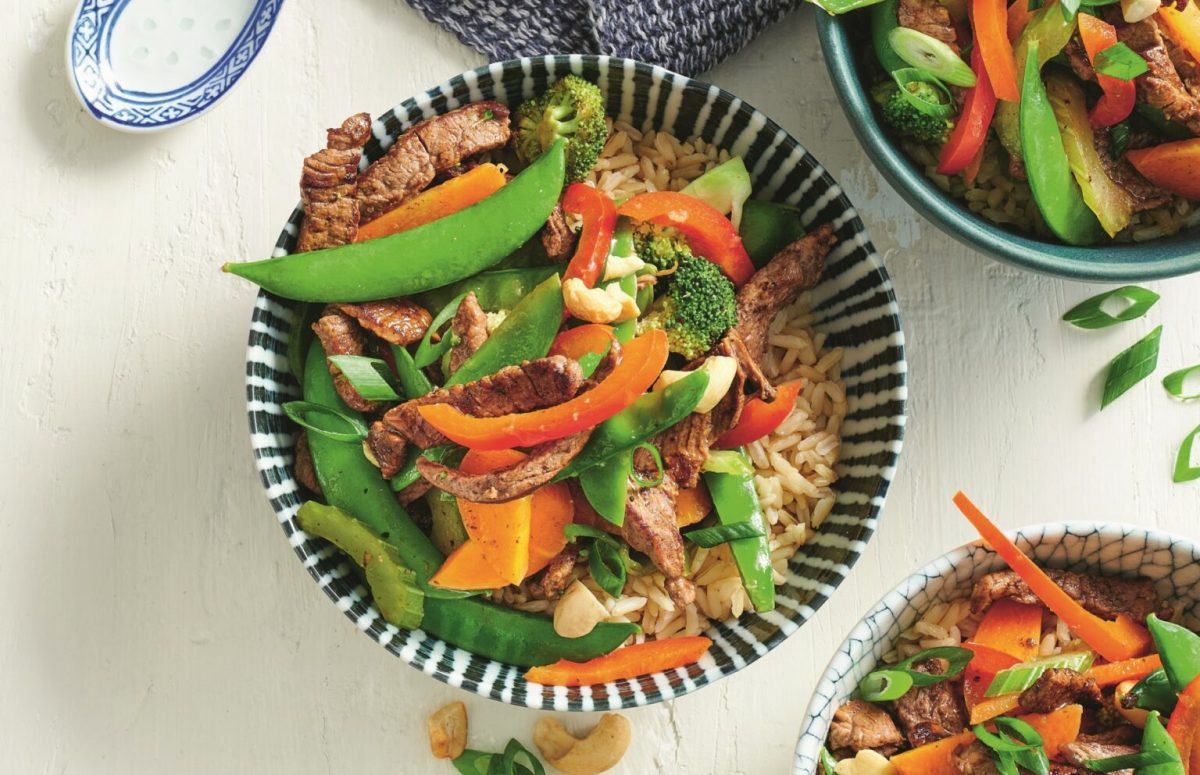Unlock the vibrant world of stir-fries, where culinary artistry meets mindful eating! This guide unveils the secrets to crafting delicious, balanced stir-fries that not only tantalize your taste buds but also support healthy blood sugar levels. Prepare to discover a treasure trove of low-glycemic ingredients, innovative sauce recipes, and expert techniques that transform simple stir-fries into nutritional masterpieces. Imagine the sizzling sounds, the aromatic steam rising from perfectly cooked vegetables, and the explosion of flavors in every bite—a symphony for your senses and your well-being.
We’ll explore the power of ingredient selection, guiding you through a careful balance of complex carbohydrates, lean proteins, and healthy fats. Learn to harness the magic of spices and herbs, transforming each dish into a unique flavor adventure. From mastering the art of stir-frying to creating visually stunning presentations, this guide empowers you to create balanced meals that are both delicious and beneficial for your health. Get ready to embark on a culinary journey that nourishes your body and delights your soul.
Ingredient Selection for Balanced Blood Sugar
Creating stir-fries that support balanced blood sugar involves careful selection of ingredients with low glycemic index (GI) values. This approach helps prevent rapid spikes and crashes in blood glucose levels, promoting sustained energy and overall well-being. Prioritizing low-GI vegetables, lean proteins, and healthy fats is key to achieving this.
Low-Glycemic Index Vegetables for Stir-Fries
Choosing vegetables with a low glycemic index is crucial for creating a blood sugar-friendly stir-fry. These vegetables digest slowly, releasing glucose gradually into the bloodstream. The following list highlights ten excellent options, each boasting unique nutritional benefits and flavor profiles.
- Broccoli: Rich in fiber and vitamins C and K, broccoli offers a slightly bitter yet satisfying crunch. Its vibrant green color adds visual appeal to any stir-fry.
- Green beans: These slender pods are packed with antioxidants and fiber, contributing to a subtly sweet and crisp texture.
- Spinach: A powerhouse of nutrients, spinach adds a mild earthy flavor and a vibrant green hue, enhancing the visual appeal of the dish.
- Cauliflower: Versatile and mildly flavored, cauliflower provides a creamy texture when cooked and is a good source of vitamin C and fiber.
- Brussels sprouts: These miniature cabbages offer a slightly nutty and bitter flavor with a satisfyingly firm texture when stir-fried.
- Mushrooms: Earthy and umami-rich, mushrooms add depth of flavor and a meaty texture to stir-fries. They are also a good source of B vitamins.
- Asparagus: Delicate yet assertive in flavor, asparagus boasts a slightly sweet and grassy taste and is rich in folate and fiber.
- Bok choy: This leafy green offers a mild, slightly sweet flavor and a tender-crisp texture. It’s a good source of vitamins A and C.
- Bell peppers (green): Green bell peppers provide a crisp bite and a slightly sweet flavor. They are a good source of vitamin C.
- Eggplant: With its unique, slightly bitter taste and soft texture when cooked, eggplant adds visual interest and a unique flavor profile to stir-fries.
Glycemic Index of Protein Sources in Stir-Fries
The choice of protein significantly impacts the overall glycemic load of a stir-fry. Lean protein sources generally have a low GI, contributing to better blood sugar control. The following table compares the glycemic index of common stir-fry proteins. Note that GI values can vary slightly depending on preparation methods.
| Protein Source | Glycemic Index (GI) | Nutritional Benefits | Flavor Profile |
|---|---|---|---|
| Tofu | Low (approx. 15) | High in protein, iron, and calcium. | Mild, adaptable to various flavors. |
| Chicken Breast | Low (approx. 0-10) | Excellent source of lean protein. | Mild, versatile. |
| Shrimp | Low (approx. 0-10) | High in protein and omega-3 fatty acids. | Sweet and delicate. |
| Salmon (if using) | Low (approx. 0-10) | High in protein, omega-3 fatty acids, and vitamin D. | Rich, savory, slightly oily. |
Balanced Stir-Fry Recipe: Chicken and Broccoli with Peanut Sauce
This recipe demonstrates a balanced approach, incorporating complex carbohydrates from broccoli, lean protein from chicken, and healthy fats from peanut butter and sesame oil.
Ingredients:
- 1 lb boneless, skinless chicken breast, cut into bite-sized pieces
- 1 large head of broccoli, cut into florets
- 1/2 cup peanut butter (natural, unsweetened)
- 2 tablespoons soy sauce (low sodium)
- 1 tablespoon rice vinegar
- 1 tablespoon sesame oil
- 1 teaspoon grated ginger
- 1 clove garlic, minced
- 1/4 teaspoon red pepper flakes (optional)
Instructions:
- Stir-fry chicken in sesame oil until cooked through.
- Add broccoli and stir-fry for 3-5 minutes until tender-crisp.
- In a small bowl, whisk together peanut butter, soy sauce, rice vinegar, ginger, garlic, and red pepper flakes (if using).
- Pour sauce over chicken and broccoli; stir to coat.
- Serve immediately over a small portion of brown rice (optional, for added complex carbohydrates) or quinoa.
Rationale: The chicken provides lean protein, the broccoli offers fiber and vitamins, and the peanut butter contributes healthy fats and a satisfying flavor. The combination of these ingredients ensures a balanced meal with a low glycemic impact, promoting sustained energy and preventing blood sugar spikes.
Flavorful Stir-Fry Sauce Recipes

Crafting the perfect stir-fry sauce is key to a delicious and balanced meal. The right sauce not only enhances the flavors of your vegetables and protein but also contributes to the overall nutritional profile, impacting blood sugar levels. The following recipes offer diverse flavor profiles, catering to various palates while prioritizing blood sugar balance.
Sweet and Savory Stir-Fry Sauce
This sauce balances the sweetness of maple syrup with the savory depth of soy sauce and ginger, creating a harmonious blend that complements a wide array of stir-fry ingredients. The addition of rice vinegar provides a touch of acidity that cuts through the richness.
- Ingredients: 2 tablespoons maple syrup, 2 tablespoons soy sauce (or coconut aminos for a gluten-free option), 1 tablespoon rice vinegar, 1 tablespoon grated fresh ginger, 1 teaspoon sesame oil.
- Instructions: Whisk all ingredients together in a small bowl until well combined. Adjust sweetness or acidity to taste.
Spicy Stir-Fry Sauce
This vibrant sauce delivers a fiery kick with a touch of sweetness and umami. The combination of chili garlic sauce, honey, and soy sauce creates a complex flavor profile that’s both exciting and satisfying. This sauce pairs particularly well with stir-fries featuring robust vegetables like broccoli and bell peppers.
- Ingredients: 2 tablespoons chili garlic sauce, 1 tablespoon honey, 1 tablespoon soy sauce (or tamari for a gluten-free option), 1 teaspoon rice vinegar, ½ teaspoon sesame oil.
- Instructions: Whisk all ingredients together in a small bowl until thoroughly blended. Taste and adjust the spice level to your preference.
Tangy Stir-Fry Sauce
This bright and zesty sauce is perfect for those who prefer a less sweet and more acidic profile. The lime juice provides a refreshing burst of flavor, while the fish sauce adds a savory depth that complements the vegetables beautifully. This sauce is particularly well-suited for lighter stir-fries featuring delicate vegetables such as spinach and mushrooms.
- Ingredients: 2 tablespoons lime juice, 1 tablespoon fish sauce, 1 tablespoon grated fresh ginger, 1 teaspoon brown sugar (optional), ½ teaspoon garlic powder.
- Instructions: Combine all ingredients in a small bowl and whisk until well combined. If using brown sugar, adjust the amount to your preference.
The Role of Spices and Herbs in Stir-Fries
Spices and herbs play a crucial role in both the flavor and health benefits of stir-fries. They add depth and complexity to the sauce, enhancing the overall taste experience. Many spices and herbs also possess anti-inflammatory and antioxidant properties, contributing to the nutritional value of the meal. For example, ginger aids digestion, turmeric boasts anti-inflammatory benefits, and garlic supports immune function. Their aromatic oils also contribute to a more visually and sensorially appealing dish. Imagine the vibrant colors of a stir-fry punctuated by flecks of bright red chili, or the fragrant steam rising from a dish infused with lemongrass and cilantro.
Comparing Soy Sauce, Coconut Aminos, and Tamari
Soy sauce, coconut aminos, and tamari all offer unique flavor profiles and nutritional compositions, making them suitable for different dietary needs and preferences. Soy sauce, a fermented soybean product, provides a classic savory taste with a slightly salty and umami profile. However, it contains gluten and can be high in sodium. Coconut aminos, a fermented coconut sap product, offer a milder, sweeter taste, free from gluten and soy. Tamari, a gluten-free soy sauce made from fermented soybeans, is similar in flavor to soy sauce but tends to be less salty. The choice depends on individual dietary restrictions and flavor preferences. For those sensitive to soy, coconut aminos are a viable alternative, offering a distinct flavor that adds depth without the potential allergic reactions.
Mastering the art of flavorful stir-fries for balanced blood sugar is a journey of discovery, a harmonious blend of culinary creativity and mindful nutrition. By understanding the glycemic index of ingredients, experimenting with diverse flavor profiles, and mastering essential cooking techniques, you unlock a world of delicious and healthy possibilities. From the vibrant colors of fresh vegetables to the tantalizing aromas of perfectly balanced sauces, each stir-fry becomes a testament to the power of mindful eating. So, embrace the adventure, explore the recipes, and savor the delicious rewards of a balanced and flavorful life.
Clarifying Questions
Can I use frozen vegetables in stir-fries?
Yes, frozen vegetables are a convenient and often nutritious option. Just ensure they are thawed before adding them to the wok to prevent excessive steaming.
How long can I store leftover stir-fries?
Leftover stir-fries are best stored in an airtight container in the refrigerator for up to 3-4 days. Reheat gently to maintain their quality.
Are stir-fries suitable for weight loss?
Yes, stir-fries can be a great part of a weight-loss diet when prepared with lean proteins, plenty of vegetables, and minimal added oil or sauce.
What are some good substitutes for soy sauce?
Coconut aminos, tamari, and low-sodium soy sauce are all excellent alternatives to regular soy sauce, offering different flavor profiles and nutritional benefits.


